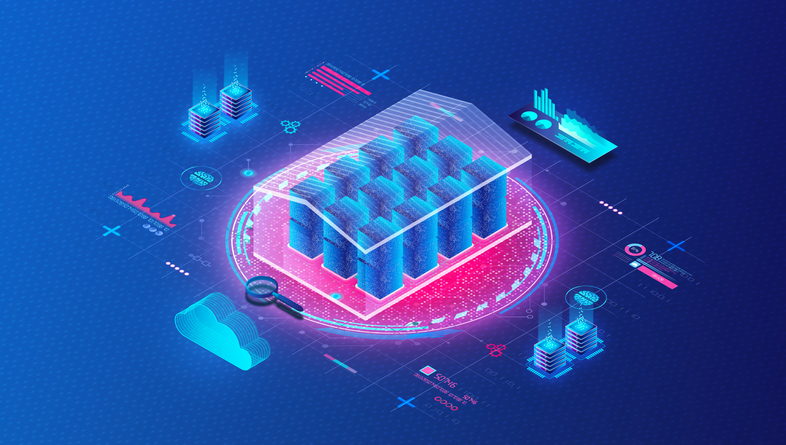
Data Integration and Interoperability in Life Sciences: Breaking Down Data Silos
Data integration and interoperability challenges continue to shape the modern life sciences landscape, where information serves as the cornerstone of innovation and breakthrough discoveries.
Yet despite technological advances, many organizations struggle with data silos that fragment critical information across disconnected systems and departments. These barriers create obstacles for researchers, clinicians, and decision-makers who need seamless access to comprehensive data for driving scientific progress and improving patient outcomes.
By breaking down data silos and establishing connected information ecosystems, life sciences organizations can unlock the full potential of their data assets to accelerate research, enhance collaboration, and deliver more effective healthcare solutions.
The Role of Data Integration and Interoperability
Data integration is the process of bringing together data from various sources to create a unified, cohesive dataset. This consolidation enables organizations to analyze comprehensive data streams, providing richer insights.
Conversely, interoperability ensures that different systems, platforms, and applications can seamlessly exchange and interpret this data. It’s the backbone of efficient communication between diverse technologies.
In life sciences, these two concepts are indispensable. Together, these processes unlock the full potential of data, driving key advancements such as:
- Accelerated drug discovery: Researchers can leverage integrated data from clinical trials, patient records, and lab experiments to identify promising compounds faster.
- Enhanced clinical decision-making: Clinicians gain access to complete patient profiles, enabling more accurate diagnoses and treatment plans.
- Optimized patient care: Unified data from multiple providers helps tailor personalized care, improving patient outcomes.
Without adequate data integration and interoperability, life sciences organizations risk missing out on these opportunities, leaving critical insights buried in silos.
Overcoming Data Silos Through Normalization and Migration

Data Normalization: Unifying Disparate Data Formats
One of the primary challenges in integrating data is the inconsistency in formats and structures. Different departments, systems, and organizations often use unique data schemas, making collaboration difficult.
Data normalization addresses this by converting disparate data into a standardized format.
For example, patient records from different electronic health record (EHR) systems may use varying units or terminologies for the same metrics. Normalization ensures this data becomes consistent, allowing for accurate cross-platform analysis.
This harmonization is crucial for research collaboration, enabling seamless data sharing and interpretation across teams and systems. This ensures that researchers and clinicians can draw insights from a unified dataset, accelerating the development of new treatments and improving patient outcomes.
Standardized data enhances internal processes and facilitates external collaborations with partners, regulatory bodies, and healthcare providers.
Data Migration: Seamlessly Transitioning Data
Rapid technological advancement in life sciences means organizations frequently adopt new platforms to enhance their capabilities.
However, transitioning data from legacy systems to these modern platforms can be challenging. Poorly executed data migrations risk losing data integrity, leading to gaps or inaccuracies.
A disciplined migration strategy focuses on maintaining data accuracy and preserving historical insights. For instance, a pharmaceutical company might need to migrate decades of clinical trial data. Any errors in this process could compromise future research and compliance.
When managed effectively, data migration ensures teams can seamlessly access and use the data on new platforms, facilitating uninterrupted workflows. This capability is vital for maintaining operational efficiency and supporting long-term innovation.
Integrating Prescriber, Payer, and Patient Data

The Power of Diverse Data Sources
Life sciences organizations rely on a vast array of data types, each offering unique perspectives:
- Prescriber data: Tracks prescribing patterns, helping pharmaceutical companies optimize drug development and marketing strategies.
- Payer data: Provides insights into reimbursement trends, financial risks, and healthcare spending.
- Patient data: Offers a window into real-world outcomes, supporting the development of personalized treatments and improving patient engagement.
Integrating these diverse data streams allows organizations to see the bigger picture. For instance, companies can identify which treatments are most effective for specific patient populations by combining prescriber and patient data.
Similarly, integrating payer data helps assess the cost-effectiveness of therapies, guide pricing strategies, and negotiate reimbursements.
Driving Holistic Insights
The synthesis of these data types fuels holistic decision-making, enabling organizations to innovate at every level.
With an integrated view of the healthcare landscape, life sciences companies can better address unmet medical needs, optimize resource allocation, and enhance patient outcomes.
Challenges in Data Integration and Interoperability
While data integration and interoperability promise transformative benefits for life sciences organizations, several significant challenges must be addressed:
1. Data Silos and System Fragmentation
Organizational silos emerge when different departments maintain separate systems for sales and marketing operations, clinical and medical solutions, and other critical functions. These disconnected environments create barriers to effective data sharing, hindering collaboration and limiting the potential for comprehensive insights that could drive business value.
2. Data Quality and Standardization
When consolidating information from multiple sources into data warehousing systems, maintaining data quality becomes increasingly complex. Organizations must establish robust data asset management protocols to ensure accuracy, completeness, and consistency across integrated systems. Without standardized processes, discrepancies can lead to unreliable analyses and compromised decision-making.

3. Security and Regulatory Compliance
The integration of sensitive data across platforms demands rigorous security measures while maintaining compliance with various regulations:
- HIPAA requirements for protected health information
- GDPR compliance for European data privacy
- FDA 21 CFR Part 11 for electronic records
- Industry-specific data protection standards
4. Technical Infrastructure Challenges
The life sciences landscape encompasses diverse technological ecosystems:
- Legacy systems that may lack modern integration capabilities
- Contemporary platforms requiring sophisticated data warehousing solutions
- Varying data formats and exchange protocols
- Complex workflow requirements across clinical and medical solutions
5. Change Management and User Adoption
Successfully implementing data integration and interoperability initiatives requires:
- Training teams across sales and marketing operations
- Updating standard operating procedures
- Ensuring consistent data asset management practices
- Building cross-functional collaboration frameworks
Industry Solutions and Standards

The life sciences sector has developed sophisticated approaches to data integration and interoperability that support both pharmaceutical operations management and clinical workflows:
Healthcare Data Exchange Standards
- HL7 (Health Level Seven): Establishes fundamental protocols for healthcare information exchange, enabling seamless data flow between systems and supporting comprehensive master data management life science initiatives.
- FHIR (Fast Healthcare Interoperability Resources): Modernizes data exchange with RESTful APIs, making it easier to integrate with CRM implementation services and marketing operations solutions while maintaining compliance with industry standards.
Technology Infrastructure
- Cloud-Based Integration Platforms
- Enable scalable data management across organizational boundaries
- Support real-time collaboration between research teams
- Facilitate secure information sharing with external partners
- Integrate seamlessly with existing pharmaceutical operations management systems
Enterprise Integration Solutions
- APIs (Application Programming Interfaces)
- Connect diverse platforms within the life sciences ecosystem
- Enable real-time data synchronization between systems
- Support integration between CRM implementation services and clinical applications
- Streamline marketing operations solutions through automated data exchange
Data Governance Frameworks
- Master Data Management (MDM)
- Creates a single source of truth for critical business data
- Ensures consistency across marketing operations solutions
- Supports pharmaceutical operations management with accurate reference data
- Maintains data quality throughout the organization
Interoperability Platforms
- Provide pre-built connectors for common life sciences applications
- Support customization for unique organizational needs
- Enable seamless integration with existing systems
- Facilitate compliance with industry regulations
Conclusion
In the rapidly evolving life sciences industry, data integration and interoperability are not just technical challenges but strategic imperatives.
Breaking down data silos enables organizations to unlock the full potential of their data, driving innovation, enhancing patient care, and staying competitive in a data-driven world.
As the industry continues its digital transformation, embracing robust solutions and adhering to industry standards will be vital. Integration and interoperability will remain at the heart of this journey, shaping a future where collaboration and progress thrive.
By staying ahead of these technological advancements, life sciences organizations can remain agile and innovative in a rapidly changing landscape.
Unlock the Power of Integrated Life Sciences Data
Ready to break down data silos and unleash the full potential of your life sciences data? Partner with Conexus to strategically integrate and harmonize your data assets, fueling innovation and transforming patient outcomes.
Schedule Your Data Strategy Consultation
